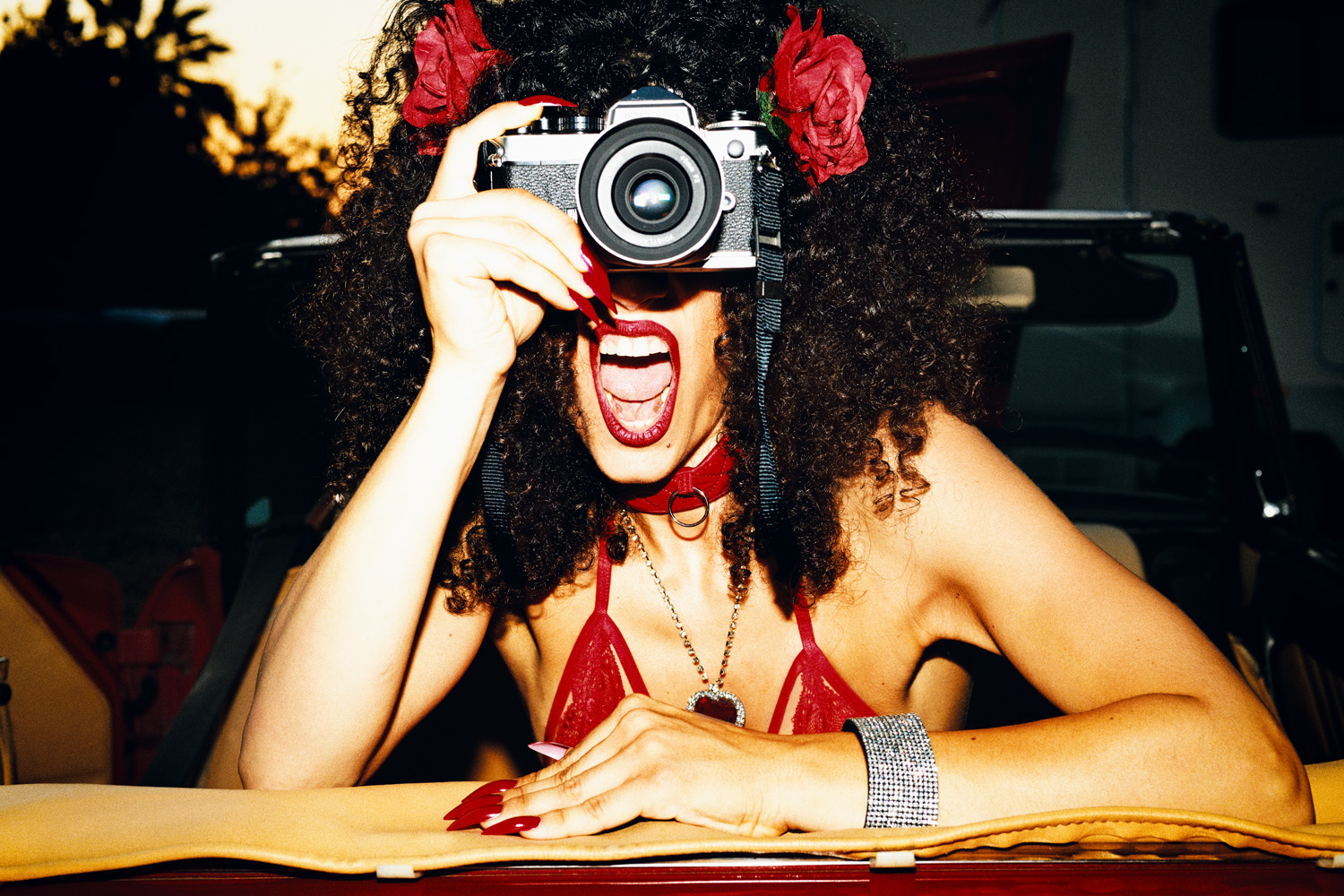Dear photographers, you killed photography
One might wonder what the title has to do with the subtitle, and whether the latter isn’t a touch delirious. In fact, it all stems from a thought I’ve had for some time, one that finds confirmation in the parallel between the technological progress so eagerly pursued by most photographers and the decline of photography itself.
In the August 2025 issue, Vogue America published the Guess campaign created entirely with AI. Guess is not the first to use AI, but the news caused a certain buzz—though not excessive—since we’re talking about a major fashion house featured in the “bible” of fashion, Vogue itself.
It is, essentially, the official sanctioning of AI to generate “photographs” taken by no one, in locations that don’t exist, with models that don’t exist, styled and with hair and makeup done by teams that don’t exist. All this to promote garments that, in theory, should have been designed by real people—though by now, it’s natural to doubt it.
I looked at the production agency: what immediately stands out is that this work wasn’t done by photographers who switched to AI, but by people who call themselves visionary creatives. That doesn’t change the fact that the quality of their work is very high, and from the first project onward, you can see how they improve step by step. The images, aside from a few flaws, are convincingly photorealistic, even more realistic than many heavily retouched photos.
As usual, public opinion was divided: supporters and detractors. The latter accused them of killing photography and its entire ecosystem.
But are we really sure they are the killers? Let’s go back to the title and subtitle and take a step back: “You press the button, we do the rest.”
With this phrase, George Eastman launched the Kodak camera in 1888, the first camera for the masses. It was essentially a wooden box preloaded with film for 100 frames. In reality, he didn’t sell a camera, but an idea: photography as delegation.
It was a milestone. Marketing, yes—but it became the paradigm of the photographic evolution: minimize human intervention, shift complexity from photographer to machine. From that moment on, photographic evolution followed this script. From early autofocus and auto modes to the advent of Photoshop and computational photography, every step moved creative and technical choices from the photographer’s mind to the machine, reducing the need for aesthetic discipline.
An optical filter, just to make an example, remains a craft—choosing and using a polarizer, a neutral density filter, or a color filter requires understanding of light and material. A preset, instead, is a shortcut: a ready-made package of adjustments that standardizes taste. In short, photography is no longer the result of a single exposure governed by the photographer, but of invisible calculations producing a pre-cooked result, optimized to look “beautiful” according to statistical standards.
Generative AI is the latest and most radical iteration of that principle, pushing this drift to its extreme. The 1888 slogan can now be updated to: “You type the prompt, AI does the rest.” No need to press the button, no need for reality in front of the lens. No need for the photographer at all. The latest technological promise sounds bitterly like the epitaph of photography as a profession.
The conceptual leap is brutal: with Kodak you pressed a button and captured reality, now you type words and create a reality that doesn’t exist. But in all this, what do photographers have to do with it? That subtitle is deliberately and mercilessly generalizing, but behind it lies a trajectory of choices—more or less conscious, more or less complicit. Obviously I don’t mean all photographers, but rather the so-called ones who have treated photography this way for decades.
The problem, then, is not AI, nor technology. The problem is you, supposed amateurs and professionals alike. You abdicated your aesthetic responsibility decades ago. You convinced yourselves that delegating everything to the machine was progress. You sat back, stopped learning, stopped observing, stopped choosing. You surrendered the creative act, the craft, to ease, to standardization, to comfort. Photography stopped demanding anything from you, and you accepted it all.
Today, when AI does what once was your work, it isn’t AI that kills photography: it’s your cultural surrender, your indifference to visual complexity, your acquiescence to the “functional but empty” digital that paved the way. Technology is only the reflection of absent authorship.
Think about what this really means: creativity has never been so available, so immediate, so accessible. And yet, the easier it becomes, the more it empties itself. Everything that was taken away from the photographer through automation returns as a boomerang in its most radical form.
A real photographer is not the one who shoots just to rack up clicks and likes. Not the one chasing trends to feel relevant, nor the one who believes a good camera does the work. It is the one who observes, who studies, who keeps putting their head before the camera. It is the one who knows the strengths of technology and uses them in service of their own aesthetics, not as an escape.
Ironically, it was Kodak that invented digital photography in 1975, only to fail to ride the very progress it had unleashed—and now it faces the risk of total collapse.
In the end, the most important question remains: if you are not the ones leading photography, who will? The machine? The software? Or the cultural void you helped create?



